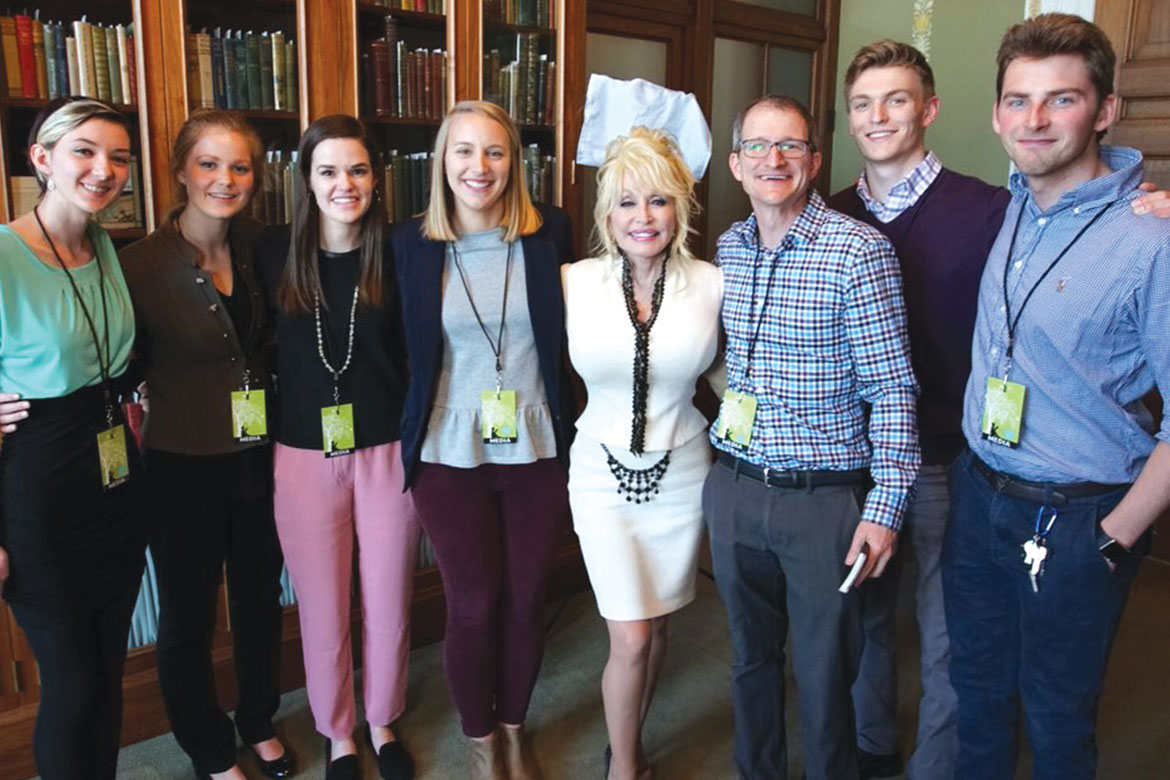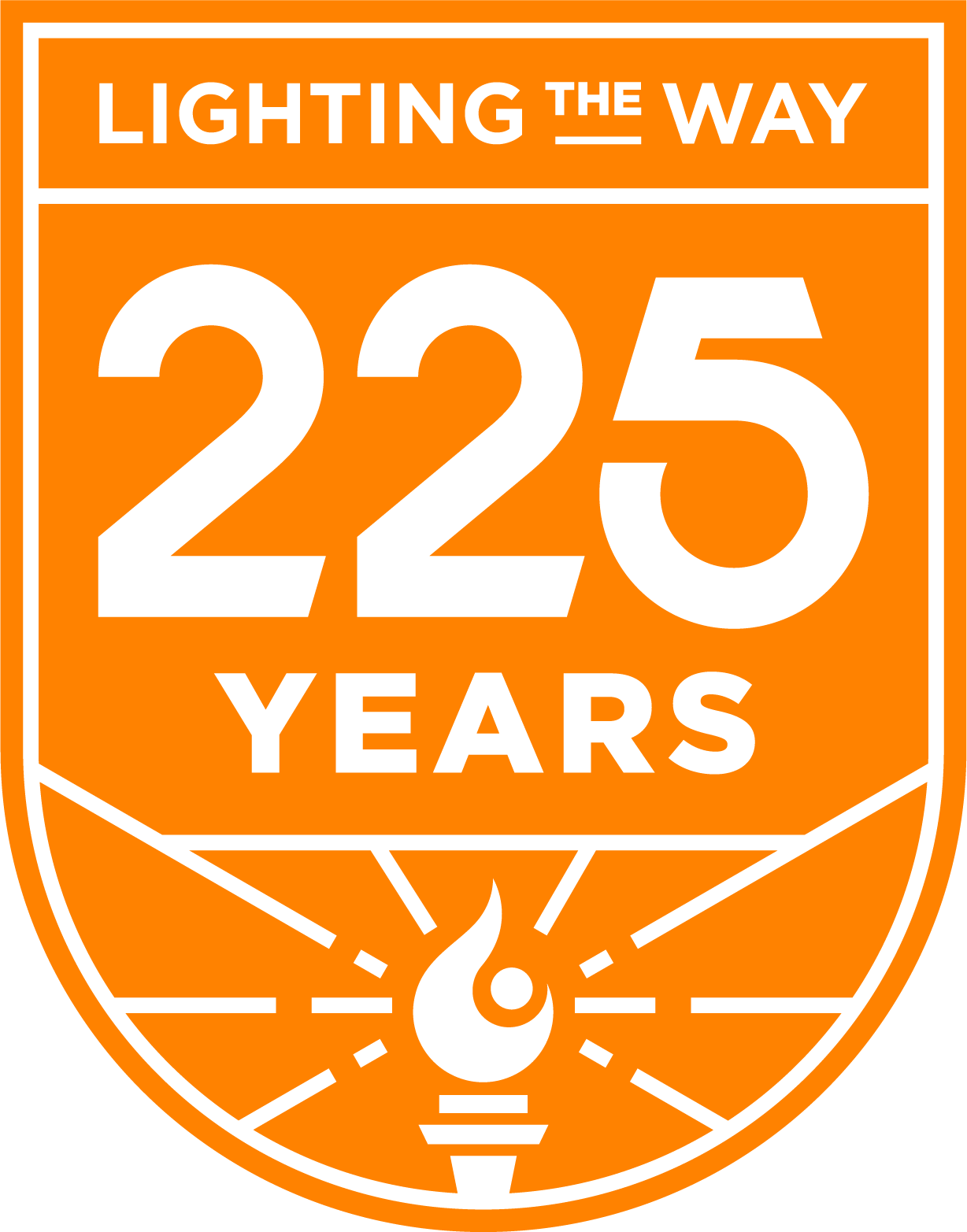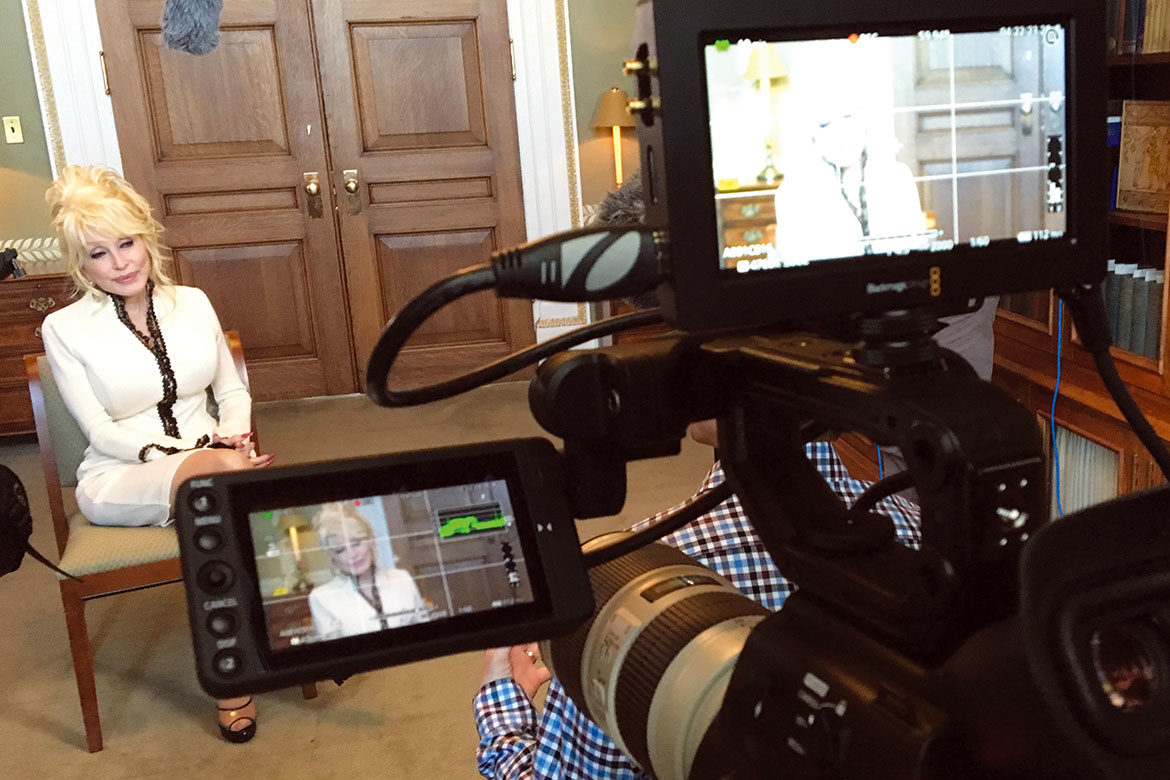Lindsey Owen, a graduate student in the College of Communication and Information, recounts her experience working with UT’s Land Grant Films on a documentary about the 100 millionth book being given away by Dolly Parton’s Imagination Library. Owen learned not only about filmmaking but also how the program changes lives.
When I chose to pursue my master’s degree in journalism and electronic media at UT, I wanted all the experience I could get, so I enrolled in Associate Professor Nick Geidner’s graduate class Advanced Reporting Across Media. One day, he walked into class and began talking about making a documentary about the 100 millionth book being given away by Dolly Parton’s Imagination Library.
The documentary would be made through Land Grant Films, a program Geidner had founded in the School of Journalism and Electronic Media to help students gain real world experience in documentary storytelling while providing nonprofit organizations with video assets to help them raise awareness and funds.

Since 1995, Dolly Parton’s Imagination Library has been providing children with one free book each month from the time they are born until their fifth birthday. The idea for the documentary came to Geidner when he realized his son, Henry, would be turning five during the same time the program would be giving away its 100 millionth book.
Initially, I thought my part in the documentary would be small—transcribing interviews and passing lenses or SD cards to the videographer. After the first meeting, I was intimidated by the amount of work that had already gone into the production. The undergraduate students had discussed research, potential interviewees, and the layout of the film.
An event to celebrate the milestone was set for the Library of Congress in Washington, DC, in February 2018. Prior to that, I’d only worked on one other interview, making me a little nervous for the job ahead. During the drive up, I was told I would interview Brooke Boynton-Hughes, the illustrator of Coat of Many Colors, a book based on Dolly’s classic song of the same name and the book chosen to be the special 100 millionth.
We wrote six simple questions for her, but the moment I asked her what it means to her to be part of the Imagination Library collection, she almost immediately started crying. Hundreds of thousands of kids receive her illustrations each year through the program, but she was most excited when her own children would receive the book. It was at that moment I began to feel more comfortable trying out new roles such as producing, because I was invested in the documentary.
That same day, we interviewed Parton herself about what it means for her program to reach such a milestone. When she walked into the room, she immediately shook hands with everyone and asked all our names. During our interview, she was humble about the program’s success and admitted that she thinks children love her because she reminds them of a character from a storybook. It’s very easy to see why children, and adults, love her so much.
With that event under our belts, during spring break we traveled to Louisville, Kentucky, for interviews with a very special portion of the Imagination Library’s audience. We arrived at the Visually Impaired PreschoolServices (VIPS) first and began searching for things that would resonate with a viewer about braille—the tactile writing system used by visually impaired people.
Everything at VIPS had a purpose. There was molding trim on the walls to act as a guide for the children. There was tile in front of classrooms and carpet separating the distance between rooms. I had never met a visually impaired person until I met the children at VIPS.
It had never occurred to me the difficulty that they would have reading a book. Later that day, I learned about the struggle visually impaired adults have with being able to read books to their own children. We also visited the American Printing House for the Blind, which creates the braille layover for Imagination Library books. Gary Mudd, the company’s vice president of public affairs, has been visually impaired since he was a teenager.
He struggled during his interview and began repeating over and over to himself “You can do this,” because it was so painful for him to talk about not being able to read to his children. Watching him hold back tears made me want to cry, too. We had interviewed people who raved about the program’s benefits, but I had never seen someone in tears because the program had truly changed their life.
Over the next three months, we interviewed more people and heard story after story about the impact of the program—a struggling author who was able to make an income when her book was included in the program, a mayor in small-town Minnesota who gave children a chance to read, and a father who is raising a second-generation Imagination Library recipient. They were all very different people brought together because of a literacy program that was started in our little corner of the world in Sevier County, Tennessee.
From the preplanning of scenes for the documentary to scheduling interviews and locations and finally editing our work, I was able to have a hand in every part. Our professor did not treat us as students but as if we were professionals on a job. The hands-on work of the documentary was the greatest experience I could have asked for in graduate school.
 This story is part of the University of Tennessee’s 225th anniversary celebration. Volunteers light the way for others across Tennessee and throughout the world.
This story is part of the University of Tennessee’s 225th anniversary celebration. Volunteers light the way for others across Tennessee and throughout the world.
Learn more about UT’s 225th anniversary


1 comment
Thank you so much for sharing this with us.
Comments are closed.